Removing Trace Amounts of Alpha-gal from Your Diet
A Guide for People Highly Sensitive to Alpha-gal
Before You Get Started…

Don’t skip steps
Before you jump into the information on this page, read Determining Your Tolerance to Alpha-gal Parts I and II (see below). Most people with alpha-gal syndrome (AGS) tolerate exposure to small amounts of alpha-gal, and these steps may be enough. We recommend you work through the steps in order, rather than prematurely limiting your food choices and possibly adding to your food bills.
- This information is for people who have completed Part I of Determining Your Tolerance to Alpha-gal and are still reacting.
- If you are still eating mammalian meat or meat products, dairy, gelatin, or carrageenan, you have not completed Part I.
- Use the outline below as a guide, not a set of rules.
- Own the process, don’t let it own you. Nobody can follow these guidelines exactly all the time. It’s okay. Do what you have to do.
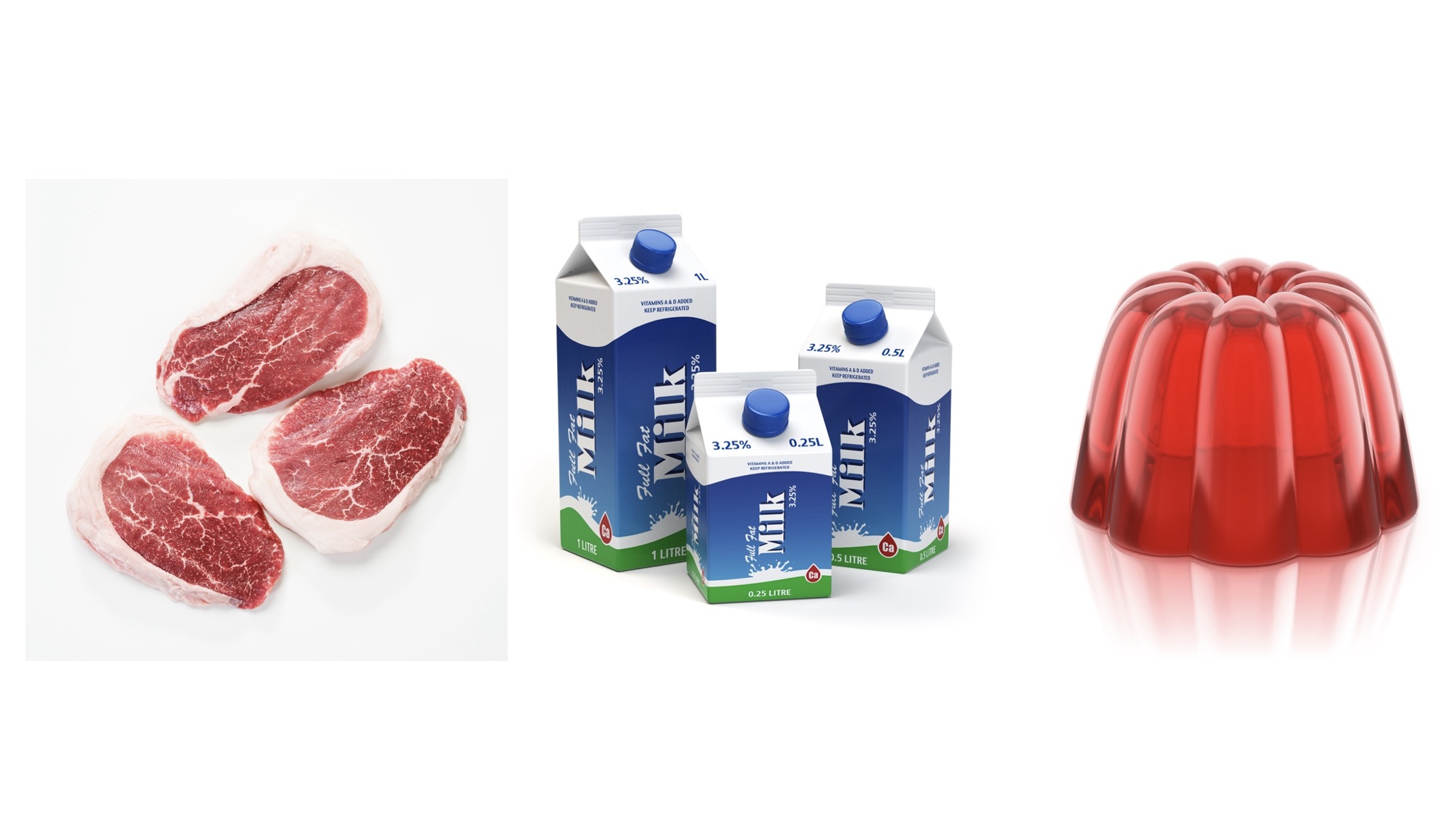
Determining Your Tolerance to Alpha-gal Part I: First Steps
A Guide for People with Alpha-gal Syndrome

Determining Your Tolerance to Alpha-gal Part II: Next Steps (COMING SOON)
A Guide for People Highly Sensitive to Alpha-gal
Familiarize yourself with these resources
- Food: First Steps, a Guide for People with Alpha-gal Syndrome
- Cross-contamination: A Guide for People with Alpha-gal Syndrome
- Gelatin: A Guide for People with Alpha-gal Syndrome
- Carrageenan: A Guide for People with Alpha-gal Syndrome
- Go Dairy Free
- Remember that Go Dairy Free is for all people who want to avoid dairy, not people with alpha-gal syndrome.
- Many dairy-free products contain ingredients, like carrageenan and gelatin, that contain alpha-gal.
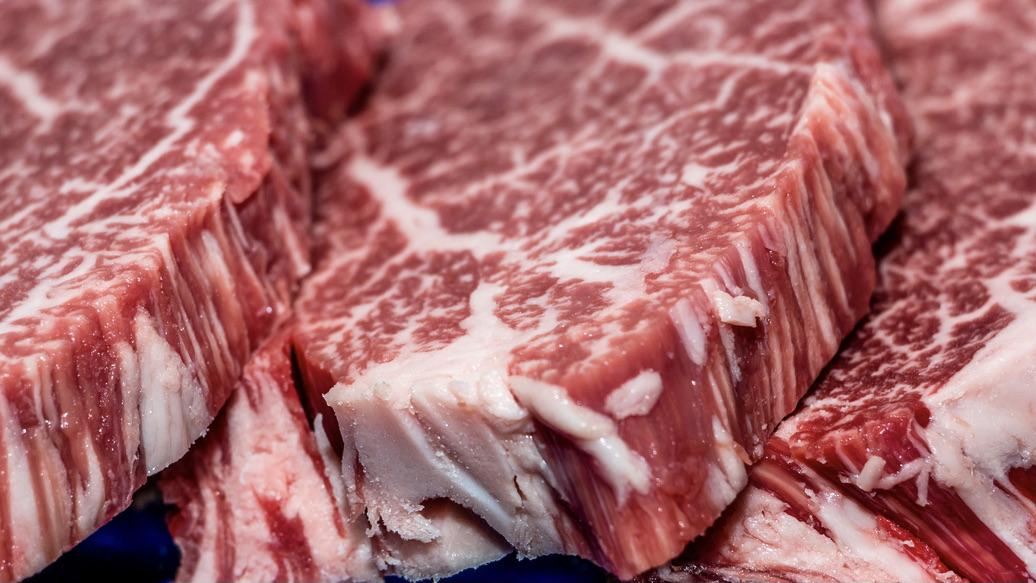
Food: First Steps
A Guide for People with Alpha-gal Syndrome

Cross-contamination
A Guide for People with Alpha-gal Syndrome

Gelatin
A Guide for People with Alpha-gal Syndrome

Carrageenan
A Guide for People with Alpha-gal Syndrome

Go Dairy Free
Information on the dairy-free diet: dairy-free recipes, product reviews, news, recommend-ations and health guides.
Join a support group
Members of these Facebook support groups can help answer your questions and guide you through this process.

The AlphaGal Kitchen Facebook Group
A place for those that are mastering their alpha gal allergy to share their alpha gal kitchen recipes and experiences.

AlphaGal Support Nonpublic Facebook group
The main AGS support group. This is a supportive community of over 10,000 people with alpha-gal syndrome.

Alpha-gal Information: Evidence-Based Support
A support group for people with alpha-gal syndrome who want fact-checked, evidence-based information. Created and managed by creator of the Alpha-gal Information website.
Mammalian Byproducts
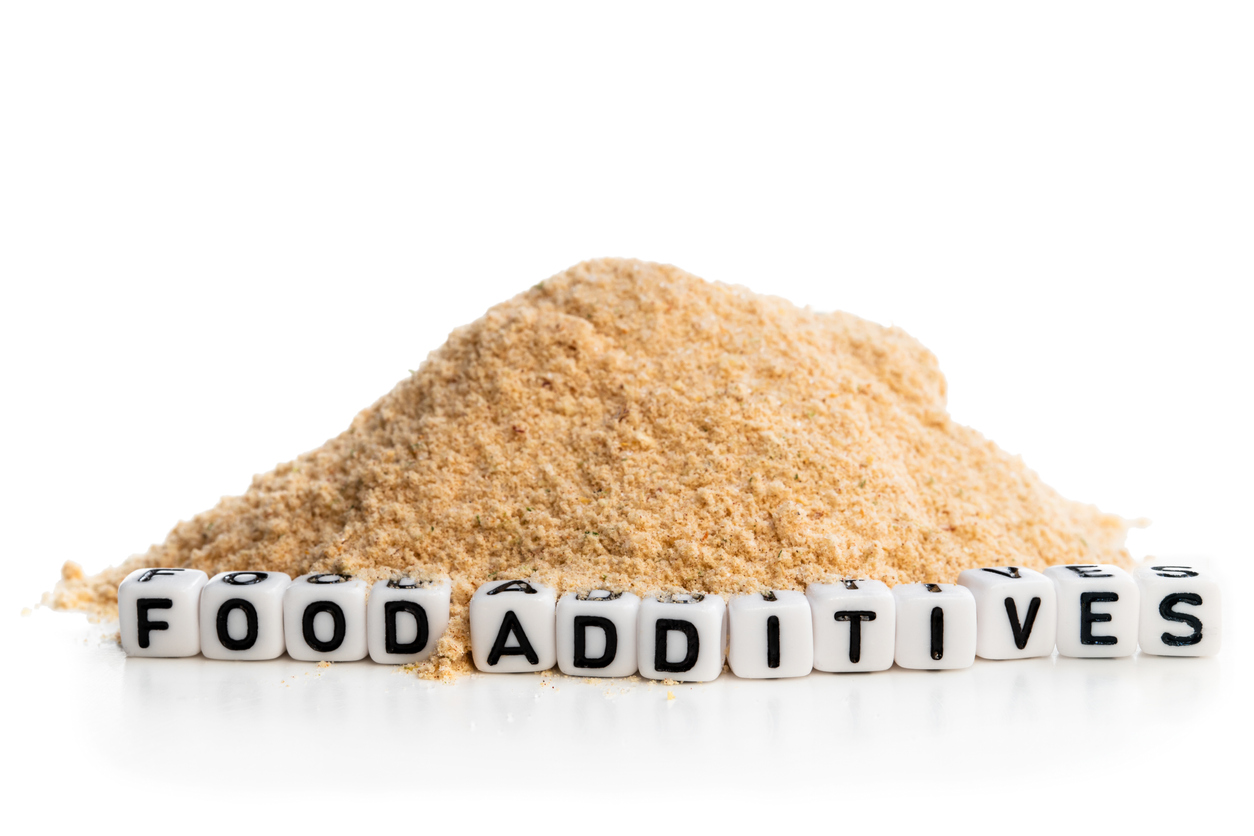
Mammalian byproducts
In Determining Your Tolerance: Part 1, we focus on how to eliminate meat, meat products, dairy, gelatin, and carrageenan from your diet. Here we concentrate on trace amounts of alpha-gal in mammalian byproducts in food.
- Hundreds of different mammalian byproducts are added to foods, medications, personal care, household, and even industrial products.
- These byproducts often have strange names, like monoglycerides and L-cysteine.
- It’s impossible to memorize all the names of the different mammalian byproducts.
- Mammalian byproducts are ubiquitous. They turn up surprising places where you would least expect them.
- When mammalian byproducts are used as processing agents, they are not listed as ingredients.
- For example, gelatin is often used to clarify wine, but you won’t find it listed on the label, even though traces of it may remain in the final product.
- We don’t know how much alpha-gal different mammalian byproducts contain.
- Severe reactions to some mammalian byproducts in people with AGS have been documented.
- Some mammalian byproducts may not be glycosylated with alpha-gal at all.
- Even byproducts that are not glycosylated with alpha-gal may be contaminated by molecules that are.
- In the absence of more information, people highly sensitive to alpha-gal tend to avoid all mammalian byproducts.
- Find more information about mammalian byproducts here.
- The Alpha-gal Information Mammalian Byproducts Database is a searchable database that you can use to look up ingredients.
- No complete list of all mammalian byproducts exists. Believe me, we looked and called every agency and association we could think of!
- This AGI database is not complete, but as far as we know, it is the most comprehensive compilation of mammalian byproducts in existence.
The most problematic byproducts
It’s impossible to list all the ingredients that anyone with alpha-gal syndrome has reacted to. However, here are a few of the worst offenders:
- Lard/tallow/suet
- Collagen/gelatin
- Carrageenan
- Whey and other dairy byproducts
- Vitamin D3 (unless vegan it is usually made from lanolin)
- Glycerin (when derived mammals–some is plant-based)
- Mono- and diglycerides (when derived from mammals)
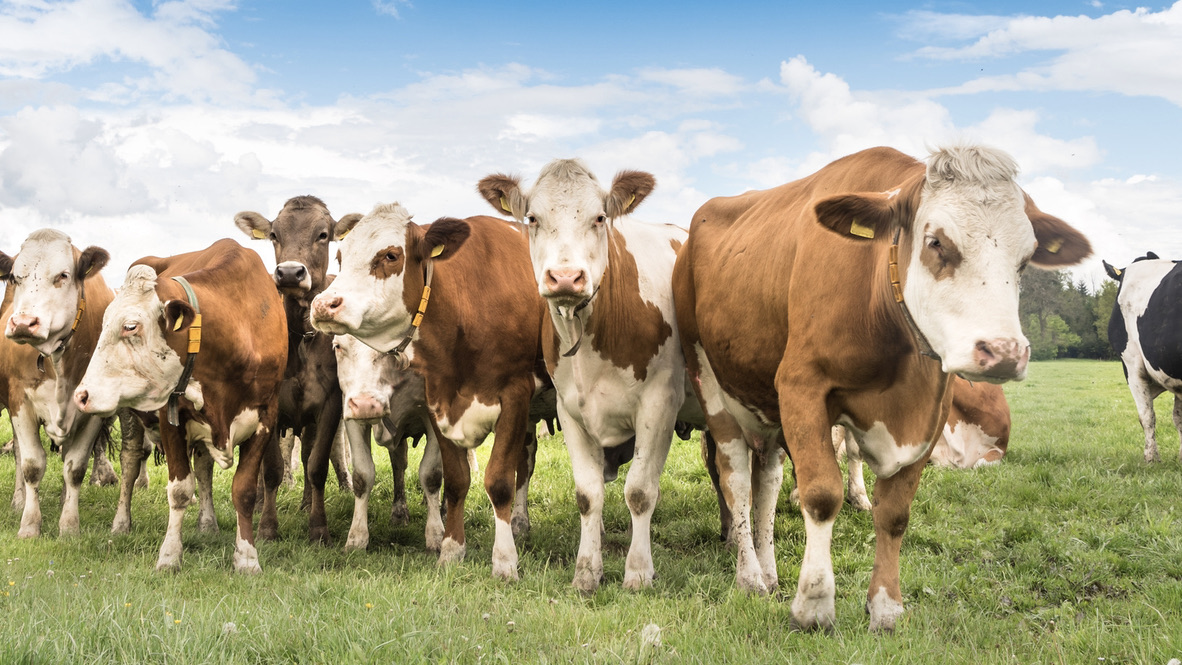
Mammalian Byproducts
Use this guide and database to find information about food ingredients.
Deep Clean Your Kitchen

Check out Darcie Clements’ tips for deep cleaning your kitchen in her Alpha-gal Syndrome blogspot. She suggests paying particular attention to:
- Kitchenware with visible “ghosts” or residues
- Wooden and heavily scratched cooking equipment
- Cast iron pans, which need to be stripped and re-seasoned
- Grills
- Ovens
- Keep in mind that fat residue in pans, ovens, and grills previously used to cook mammalian meat may become aerosolized when heated, and the aerosols may be deposited on your food.
- Unlike proteins, Alpha-gal is heat stable and not broken down by normal cooking temperatures.
Tips for deep cleaning your kitchen:
- Use vegan cleaning supplies, when possible. Popular vegan cleaning products brands include:
- Seventh Generation
- Mrs. Meyer’s
- Find more brands here.
- Clean as a whistle–get your oven sparkling by VeganLife
Focus on Whole Foods
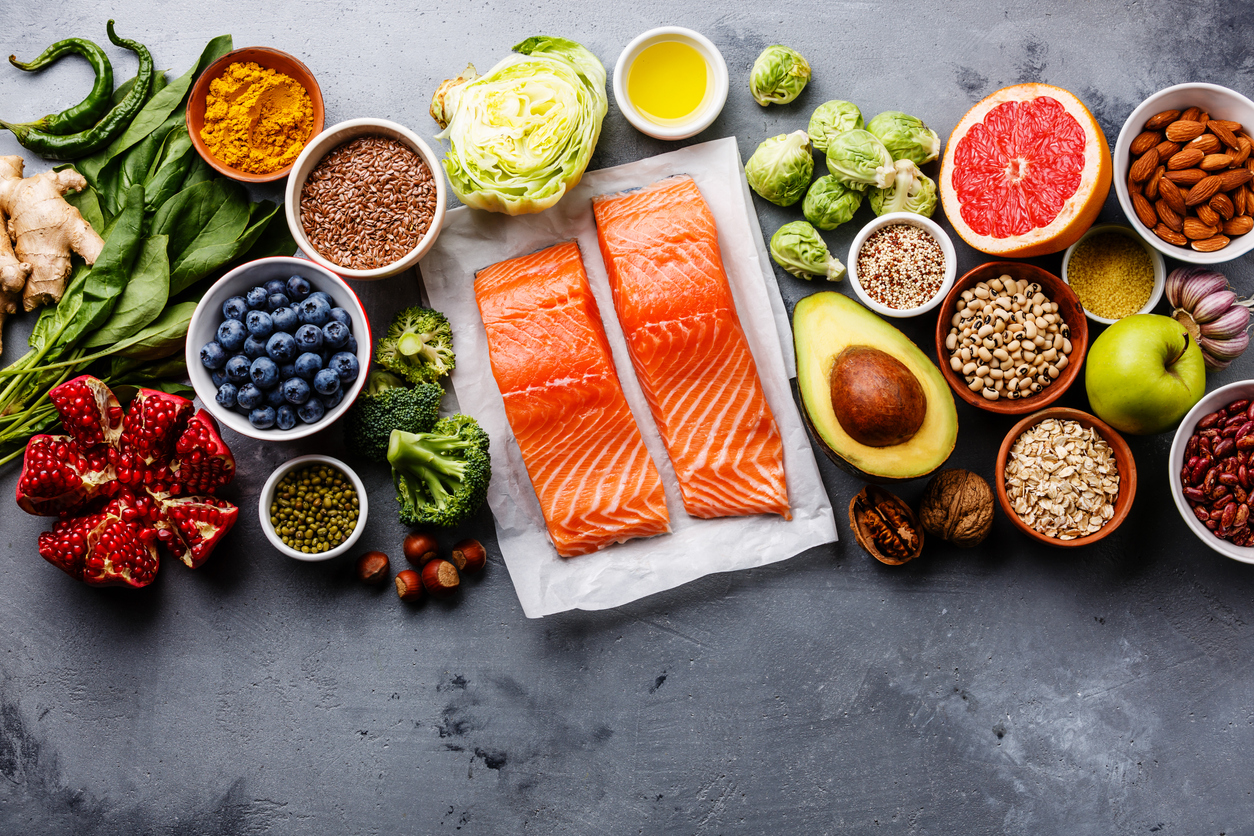
While you figure out what you can and cannot eat, you are better off buying raw, unprocessed, additive-free food (like poultry, fish, vegetables, fruit, beans, and grains) and cooking them yourself at home in your deep-cleaned, alpha-gal-safe kitchen.
Processed foods and foods with additives often contain hidden mammalian ingredients. These can take the form of:
- Mammalian ingredients with unrecognizable names, like monoglycerides
- Familiar ingredients, like vitamin D3, that you wouldn’t expect to be derived from mammals
- Gelatin and carrageenan used to clarify wine, beer, and some juices
- Carrageenan applied to seafood to mask odor and aid moisture retention
- Processing agents, such as gelatin and carrageenan when used as clarifying agents
- In the U.S., federal regulatory agencies don’t require manufacturers to list processing agents on packages, unlike ingredients.
Avoid Non-vegan Processed Foods

Limit the number of processed foods you buy, and buy vegan products when you do.
As described in Determining Tolerance Part II, there is an easier way and a harder way to figure out which foods you may be reacting to:
- The harder way is to continue eating all the processed foods you have always eaten, checking the ingredients of every processed food product you buy.
- You will soon learn that determining which processed foods contain mammalian-derived ingredients is both difficult and time-consuming.
- Figuring out which ingredients in which foods triggered your reactions can be close to impossible with this approach due to the delayed nature of alpha-gal reactions.
- The easier way: stop eating non-vegan, processed foods and drinks, at least until you figure out what you can and can’t eat and bring your reactions under control.
- Once your reactions are under control, add more foods back into your diet, one by one.
- Some people use a hybrid version of these two approaches, primarily eating whole foods but including a few of their favorite processed foods, after checking that they are alpha-gal-free.
- In the U.S., the term “vegan” is not regulated by the FDA and is no guarantee that a product is mammal-free.
- Vegan “certified” products are safer.
- To learn more about interpreting vegan labeling, see Darcie Clement’s explanation here.
- Check vegan products for carrageenan, if you react to it.
- Like carrageenan, agar-agar and nori are made from red algae. They do not seem to be commonly derived from red algae that produce carrageenan, though. It’s unclear whether they may contain any polysaccharides that include the alpha-gal linkage. Many people with AGS report tolerating them, but there are also some reports of reactions.
- Koji is made from aspergillus fungi, which express alpha-gal. Most of us aren’t bothered by it, but some of us may be.
- Many people with alpha-gal are bothered by gums, like gellan gum, xanthan gum, guar gum, etc.
- It’s not clear why gums are an issue for some of us, although several hypotheses have been suggested.
- For people who are bothered by gums, GI issues tend to be the main issue.
- You might want to avoid gums while you sort things out.
Learn How to Cook

Invite people over for meals instead of eating out. Added benefits will be that you save money and have a healthier diet.
- Find cookbook suggestions on the Food page of this website.
- Join the AlphaGal Kitchen Facebook group for lots of alpha-gal-friendly recipes and cooking tips. There are lots of vegan cooking groups on Facebook, too.
- Follow the Two Alpha Gals on Instagram for fun, alpha-gal friendly recipes.
- Take the Forks over Knives cooking course and become a plant-based home chef in 90 days.

The AlphaGal Kitchen Website
Alpha-gal-friendly recipes.

Two Alpha Gals
Recipes and more.

Forks over Knives
Resources for plant-based cooking.

VegNews
All things vegan

The Conscious Plant Kitchen
Easy vegan recipes for any diet including vegan keto recipes and vegan paleo recipes.

Go Dairy Free
Information on the dairy-free diet: dairy-free recipes, product reviews, news, recommend-ations and health guides.

The New York Times Cooking
Lots of recipes of all kinds, not all alpha-gal-friendly.
Bring Your Own Food

If possible, stop eating out until you have made some progress figuring out what you react to.
- It is challenging to avoid trace amounts of alpha-gal when you eat out due to cross-contamination of pots, pans, grills, etc.
- Prepare food at home and bring it with you to work or social gatherings.
- Invest in a cooler or even a 12-volt portable fridge for the car.
- Air B&Bs with kitchens may work better than hotels or motels when traveling.
- This is a temporary step for most of us. You can try eating out again as you get on top of things.
Learn How to Read Labels

“No independent certifier seems to be entirely comfortable with the idea of their symbol being used as the sole means of avoiding allergens, but as a tool for selecting what products to examine more closely first, they can be invaluable.”
It gets easier
Learn to read labels. At first, this is a pain, but you will quickly get used to it. These tips will help.
“Vegan” vs. “Vegetarian”
- Vegetarian≠vegan.
- Vegetarian foods can contain milk and dairy products and byproducts, like whey.
Vegan and vegan certified foods
The terms “vegan” and “plant-based.”
- In the U.S., the terms “vegan” and “plant-based” both mean containing no animal-derived ingredients.
- Unfortunately, the FDA does not regulate either term. Therefore, the presence of these terms on a product’s label is not a guarantee that it is mammal-free.
Look for vegan and plant-based certification symbols
- Products that are certified vegan or plant-based have been verified vegan by independent certification organizations.
- These organizations use symbols to help customers easily spot vegan and plant-based products.
- Keep in mind that even vegan-certified products may be produced on shared lines and can be cross-contaminated with mammalian products.
- This problem seems especially common with vegan-certified chocolate
- Find a global list of vegan certifiers and their certification marks here.
- To learn more about interpreting vegan labeling, see Darcie Clement’s explanation here.
- See also The Ultimate Guide to Vegan Symbols, Logos, and Signs
- Learn about plant-based certification here.
For vegan certified products, check the ingredient list for carrageenan
- Carrageenan is derived from red algae and is vegan, but it still contains alpha-gal.
Hidden dairy
Dairy labeling laws
Milk is a Big 8 allergen and must be declared on ingredient lists of many, but not all foods and drinks.
- Foods and drinks that do NOT have to be labeled include meat, fish, egg products, fresh fruits and vegetables, and alcoholic drinks.
- Medications, supplements, personal care, and household products also do not need to have dairy ingredients declared on their labels.
“Non-dairy” vs “dairy-free.”
-
- Non-dairy can contain dairy byproducts, like whey and casein.
- Dairy-free products do not contain dairy but may contain other mammalian byproducts or carrageenan.
Kosher labeling
- Kosher certification is not strict enough for people with allergies, and no guarantee that foods do not contain alpha-gal.
- We can use kosher labeling to help us avoid foods that contain dairy, but not to help us know which ones definitely do not.
- Beware of kosher products labeled “pareve.”
- Many pareve products contain milk protein, which is considered milk-free under kosher guidelines.
- Look for a “D” or the word “dairy” following the circled K or U on a product label.
- This means the product contains dairy.
Cruelty-free products
- Cruelty-free products are not tested on animals but may contain ingredients derived from animals.

⚠
This is NOT a vegan certification symbol. It means a product is kosher,
NOT vegan!
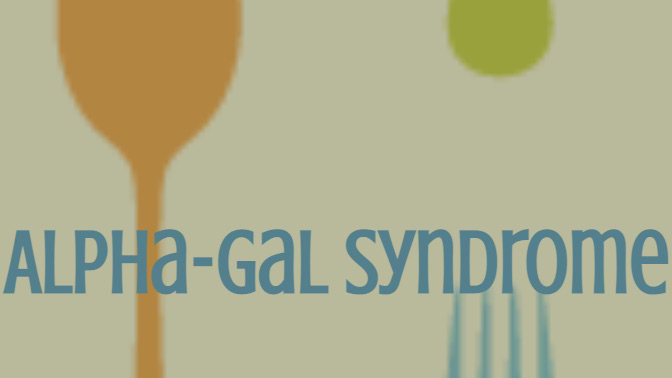
Darcie Clements' Alpha-Gal Syndrome Blogspot
Information on reading labels, surprising sources of alpha-gal, etc.
Resources for Label Reading

Phone apps
There are three phone apps that people with alpha-gal syndrome find helpful for figuring out if ingredients listed on the labels of products are alpha-gal-safe. None of these are perfect. You CANNOT count on them to catch every product you might react to, and we caution you NOT to rely on them exclusively. However, they can help you avoid many products that contain alpha-gal, especially while you begin to learn about the names of different byproducts and other problematic ingredients.

FIG
Scan the barcode and FIG will compare the ingredients and to your allergen statement. Many options, including:
• Alpha-gal
• Dairy
• Vegan

Is It Vegan?
Scan the UPC bar code on a product and see whether the product is vegan, vegetarian, or neither and a detailed list showing which ingredients are vegan, vegetarian, non-vegetarian, etc.
Is It Vegan? works on iPhones only.

Ingredian Pro
Ingredian Pro uses your phone’s camera scan ingredient label text. It has an alpha-gal diet setting.
Ingredian Pro works on Android phones only.
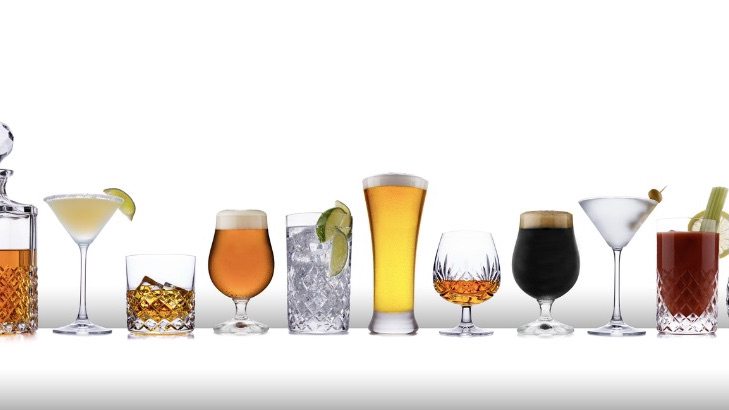
Barnivore
A guide to vegan wine, beer and liquor.
Wallet cards

Kelly Mom Hidden Dairy Cheat Sheet
Wallet card
The AGI Mammalian Byproducts Database
Use the searchable AGI Mammalian Byproducts Database to check whether individual ingredients are derived from mammals. For example, you can’t check “Cheerios,” but you can input vitamin D3. We do our best to enter every mammalian byproduct into the database, but we are always going to miss a few. As with the phone apps, you can NOT rely exclusively on this database to ensure that the products you buy are alpha-gal-free, but it’s a good starting place.

Mammalian Byproducts
Use this guide and database to find information about food ingredients.
Shopping Tips
Use these tips to help you figure out possible sources of continued exposure to alpha-gal

Poultry
- Make sure your poultry sausages do NOT have mammalian gut or collagen casings.
- Mammalian intestines have a very high alpha-gal content.
- It is NOT safe to remove the casings and then cook and eat the sausages. People with AGS have reported severe reactions after trying this.
- Do not eat poultry products that contain “natural flavors” or “natural flavorings” unless you have verified that these are not derived from mammals.
- “Natural flavors” in poultry products are often beef or pork-based.
- Be aware that even raw chicken may be injected with carrageenan, mammalian broth, or “natural flavors.”
- Watch out for carrageenan and gelatin added to lunch meats, sausages, ground meat, etc.
- Chicken broth and bouillon often contain mammal-derived “natural flavors.”
- Ground and sliced poultry can be cross-contaminated by equipment previously used to prepare mammalian meats.
- Processed poultry products, like turkey bacon and hot dogs, can be cross-contaminated when made on the same line as similar pork products.
- Oscar Mayer turkey bacon, for example, is made on the same line as their pork bacon, and people with AGS have reported reactions to it.
- There is often dairy in the batter or brine used to make fried chicken, and beef lard may be added to the frying oil.
- Chicken nuggets are often highly processed and contain many additives.
- Consider avoiding chicken nuggets, at least until you figure out what your triggers are.
- If you must have nuggets:
- Ask for a recommendation in one of the Facebook support groups.
- Alpha Gal Support Nonpublic is especially helpful for questions like this.
- It’s Facebook, folks, so take everything you are told with a grain of salt.
- Contact the manufacturer and ask if dairy or other mammalian byproducts are used in their production, including ingredients and processing agents.
- Ask for a recommendation in one of the Facebook support groups.
Seafood
- Fish and other seafood may be treated with processing agents, such as carrageenan or gelatin, to help them retain moisture and to reduce odor.
- Before buying seafood, ask if it was treated, but don’t expect retailers always to know.
- Seafood flash-frozen immediately after it is harvested is less likely to be treated.
- Try to buy direct, so you know who, how, where, and when your seafood was caught, processed, and distributed.
- Some people in the AGS community buy from Wild Alaskan Company, which claims they use nothing but water on their seafood.
- Vendors at local farmers’ markets can be a good source of seafood because they often buy directly from a single, small-scale provider and can find out how their products are processed.
- For unknown reasons, some people react to canned tuna (6).
- This may be due to the use of carrageenan or other processing agents.
- Some of us have had good luck with Wild Planet pole caught tuna.
- Processed seafood can be problematic. For example, many of us have reacted to imitation crab meat.
- This may be because it is made with meat glue or for another reason.
- As is often the case, it is easier to determine which products have a history of causing reactions in people with AGS than why.
- Some people report that they do better with wild-caught seafood than farmed seafood for reasons that aren’t clear.
- These reports often involve farmed salmon.
- Remember to avoid flounder roe (flounder eggs)!
- Everyone with AGS should avoid flounder eggs, as they have high alpha-gal content and can cause severe reactions.
- Some other fish eggs also contain alpha-gal, but as far as we know, not the ones most commonly consumed in the U.S.
- Watch out for unfamiliar fish eggs that you have never eaten before, just in case.
- The flesh of flounder has not been reported to have alpha-gal in it or to cause reactions in people with AGS.
- You may want to avoid foods made with turtles, as at least one turtle species has been found to have alpha-gal in it.
Emu and ostrich
Emu and ostrich are great beef substitutes.
- A good source is Amaroo Hills Emu Farm.
- The owner has alpha-gal and is trusted by the alpha-gal community, so we don’t worry about shared lines or other sources of cross-contamination when buying sausage, bacon, emu pastrami, etc., from this company.
- Amaroo Hills also sells duck bacon as well as Italian and breakfast sausage made from duck and many other delicious products.
Eggs
Some people with AGS report reactions to chicken eggs for reasons that are not clear, as we wouldn’t expect chicken eggs to contain alpha-gal. If you have this issue:
- Try duck eggs. You can often find them at farmer’s markets.
- Try eggs from vegetarian-fed chickens.
- You can also make a flax egg substitute from flax flour and water.
Fruit and vegetables
As with meats, it is best to buy raw, unprocessed fruits and vegetables and prepare them yourself at home.
- Fresh, unpeeled fruits and vegetables are fine, even for the most sensitive of us.
- If you are super-sensitive, you may want to wash them to remove biofilms, which can include waxes and carrageenan, and any residue of mammal-derived sticker glue.
- Cut fruit may be treated with carrageenan to help maintain moisture and freshness. As the carrageenan is a processing agent, not an ingredient, it may not be listed on the packaging.
- Watch or for “sea vegetables” like dulse and nori. Dulse and nori are red algae.
- Alpha-gal is a component of the cell walls of red algae.
- Most people with AGS are not bothered by nori, but some report reactions after eating it.
- If you do eat vegetables cooked outside your home, make sure they were not prepared with butter, lard, or broth, and watch out for those cooked in pots and pans that may have been previously used to cook meat.
Grains and pulses (beans, lentils, peas, tofu)
Some people who continue to have reactions after removing obvious sources of alpha-gal from their diets find this approach helpful for figuring out what they do and do not tolerate:
- First, temporarily switch to a simple diet of beans or lentils and rice, supplemented with fresh fruits and vegetables.
- Then slowly add back other foods.
Beans and lentils
- Beans may sound boring, but they don’t have to be.
- Explore Indian, Middle Eastern, Italian, and Latin American bean and lentil varieties and recipes.
- Camellia is an excellent source of different kinds of beans and bean recipes.
- Join vegan shopping and cooking Facebook groups for ideas.
- Don’t miss the plant-based diet resources listed on the Alpha-gal Information Food page.
Tofu
- Some tofu has carrageenan added to it as a stabilizer. Since stabilizers are processing agents, not ingredients, carrageenan may not be listed on the label.
- Even people who are highly sensitive to alpha-gal do not generally report issues with tofu, so the use of carrageenan may be rare, although we can’t confirm this.
Grains and rice
- If you buy fortified grains or rice, make sure that they are vegan.
Baked goods
Non-vegan baked goods can contain lard (especially pastries, pie crusts, tortillas, tortilla chips), dairy, gelatin (frosting, jelly fillings), and mammalian byproducts.
- Baking your own bread and other baked goods is an excellent option for those with the time for it.
- If you buy bread, choose vegan brands or bread with few and simple ingredients.
- Avoid bread with additives.
- Some of the mammalian byproducts added to bread include:
- Mono- and diglycerides (sometimes plant-derived)
- L-cysteine
- For reasons that aren’t clear, some people with AGS go on to develop gluten sensitivity, so consider this possibility if even alpha-gal-safe baked goods don’t agree with you.
Dairy-free dairy alternatives
Dairy-free vs. non-dairy
- Choose vegan, dairy-free products.
- Non-dairy products are NOT dairy-free.
- Non-dairy products often contain dairy byproducts, like whey and casein
Vegan vs. non-vegan dairy-free products
- Some non-vegan, dairy-free products contain mammalian byproducts, like vitamin D3 and gelatin.
- Vitamin D3 is derived from sheep’s wool.
Keep it simple
- Choose dairy-free products with a minimum of ingredients or learn to make your own.
Check for carrageenan
- Remember to check for carrageenan, which is frequently added to dairy-free products.
Gums
- You may also want to avoid products with gums in them.
- Some people with AGS react to gums in foods for reasons that aren’t clear.
- Examples of gums include gellan gum, xanthan gums, and guar gum.
- If you do not react after consuming products containing gums, don’t worry about them.
GoDairyFree is an excellent website with more information about dairy allergies and helpful reviews of dairy-free products.
- Remember that people with allergies to proteins in dairy do not need to worry about mammal-derived byproducts or carrageenan.
- Double-check everything recommended on this website for mammalian byproducts and carrageenan!
Snacks
- At first, stick to whole, unprocessed snacks, like:
- Nuts
- Fruit
- Vegan certified snacks
- Most nuts are fine, but watch out for nuts coated with gelatin to help the salt stick, for example:
- Some Planters Peanuts.
- Frosted PopTarts contain gelatin, and many of us have had problems with them.
- Some frosted cereals, like Kellog’s Frosted Miniwheats, contain gelatin.
- Many kinds of cereal and other foods are fortified with vitamin D3.
- Vitamin D3 is usually derived from mammals unless a product is vegan-certified.
Condiments, spices, and other kitchen staples
- Some people with AGS report reactions to sugar bleached with bone char.
- Organic, unbleached sugar should not contain bone char residues.
- Many condiments, like some ketchup and mayonnaise, contain mammal-derived ingredients, often in the form of “natural flavors.”
- Some spices and spice mixes also have mammalian ingredients.
Non-alcoholic beverages
As with foods, the least processed products with the simplest ingredients are best while figuring out what you react to.
Water
Even the most sensitive of us usually do fine with all types of water, but in rare cases, people have reported that residues of bone char in water filtered through bone char filters affect them. If this happens to you:
- Avoid tap water and ice with noticeable flecks of black, especially right after changing home filters.
- Switch to home filters that use coconut husk char
- Smart Water, Lifewtr, and Deer Park are bottled water brands that members of the alpha-gal community often recommend.
Juice
At first, it may help to avoid juice or stick with homemade juice.
- The most common problem is the addition of vitamin D3.
- Most vitamin D3 is derived from lanolin, which is made from sheep’s wool.
- Vegan vitamin D3, which is derived from lichens, is less commonly used.
- Juices may be clarified with gelatin or carrageenan, especially apple juice.
- Clarifying agents don’t need to be listed on packaging.
Coffee and tea
When people struggle with reactions to tea or coffee, creamer or sugar is usually the problem. Try the following:
- Make sure your creamer is
- Dairy-free
- Vegan
- Carrageenan-free
- If you react to gums, also gum-free
- Switch to organic or unprocessed sugar, which isn’t bleached with bone char
- Some people in the AGS have reported issues with coffee filters for reasons that aren’t clear.
- If you think the paper filters you are using are a problem, switch to another coffee-making method.
- People with AGS should not consume coffee that has passed through the digestive tract of mammals, like civet coffee.
Protein drinks
- Protein drinks tend to have lots of ingredients and are best avoided.
- Watch out for collagen and whey, in particular. People with AGS have had severe reactions to both.
- Also beware of carrageenan, which may be added as an emulsifier.
Powdered drink mixes
- Many contain carrageenan or gelatin as an emulsifying agent.
Alcoholic beverages
Wine, beer, and other alcoholic drinks
- Wine is often clarified with gelatin.
- Buy vegan wines
- Beer is often clarified with carrageenan or other red algae derivatives, especially beer from small craft breweries.
- Hard liquor is generally okay.
- Use the Barnivore app (see below) to check whether alcoholic beverages are vegan or not.
Poorly Understood Possible Sources of Reactions
As with every medical condition, there are areas where patient reports and expert opinion are not completely aligned. Here we cover some products that patients report reacting to but which experts view with skepticism. It’s unclear whether any of these items contain alpha-gal or whether patients’ reactions are due to something else, such as mast cell syndromes, other allergies, gut issues, etc.
Sugar processed with bone char
Non-vegan sugar is often bleached using char made from mammalian bones. Experts are skeptical that sugar could contain enough alpha-gal to cause reactions. However, many of the most alpha-gal-sensitive members of the alpha-gal community report reacting to sugar bleached with bone char.
If you find you react to bleached sugar:
- Buy organic sugar (which is not processed with bone char) or
- Buy unprocessed sugar, like Sugar in the Raw.
Water filtered through bone char
Municipal, bottled, and home-filtered water is often filtered through bone char. Some highly alpha-gal-sensitive people report reacting to it.
If you find you react to water filtered through bone char:
- Buy a home filter that uses a coconut husk filter, like
- Buy water filtered via reverse-osmosis like:
- Deer Park
- Smart Water
- LifeWtr
Agar-agar, nori, and other red algae products
Carrageenan (which contains the alpha-gal epitope) is a common component of the cell walls of red algae. It’s likely that all these red algae products contain it. Some people with AGS report reactions to these products, but even most people highly sensitive to alpha-gal tend to tolerate them.
If you react to any of these products, check labels for them.
Gums
Many patients with AGS report reacting to gums. As of yet, these reports have not been documented in the literature, and a mechanism by which gums might cause reactions in people with AGS has not been proposed. Some hypothetical possibilities include:
- Some gums are made using whey.
- Gums disrupt the gut mucosa, which may expose gut epithelia to trace alpha-gal exposures.
- Some gums may be cross-reactive with alpha-gal
Examples of gums:
- Gellan gum (this seems to be the most problematic gum for us)
- Guar gum
- Xanthan gum
If you find you react to gums, check labels for them. They are especially common in dairy-free dairy alternatives.
Koji
Some aspergillus molds are known to express alpha-gal. Koji is an aspergillus mold used to produce some Japanese foods, like soy sauce and miso, and alcoholic drinks, like sake. Some people with AGS report reactions to these products, but even most people highly sensitive to alpha-gal tend to tolerate them.
If you find you react to soy sauce and miso, you may need to avoid them.
Shopping Resources
Red meat substitutes

Amaroo Hills Emu Farm
Emu and ostrich steaks, ground emu, breakfast and Italian sausage, emu pastrami and more. Tastes just like the red meat you love!

Fossil Farms
Fossil farms sells ostrich, emu, guinea fowl, pheasants, quail, and squab, etc. Since this company sells mammalian products, inquire about shared lines and other possible sources of cross-contamination.
Seafood

Wild Alaska Seafood Company
A monthly seafood membership that delivers sustainably-sourced seafood to your doorstep.

Seafood Finder
Use this tool from Local Catch to find local fishers and seafood harvesters who sell directly to consumers.
Vegan

VegNews: Companies That Ship Vegan Staples to Your Door
Check out VegNews’ lists of vegan grocery stores, meal delivery services, online sources of vegan snacks and more.

Vegan Essentials
A vegan online store and grocer

Thrive Market
A popular source of vegan foods and other vegan products. Not all products are vegan, but there is a vegan search function.

Camellia
A great source of beans and other legumes.

Vegan Target Facebook Group
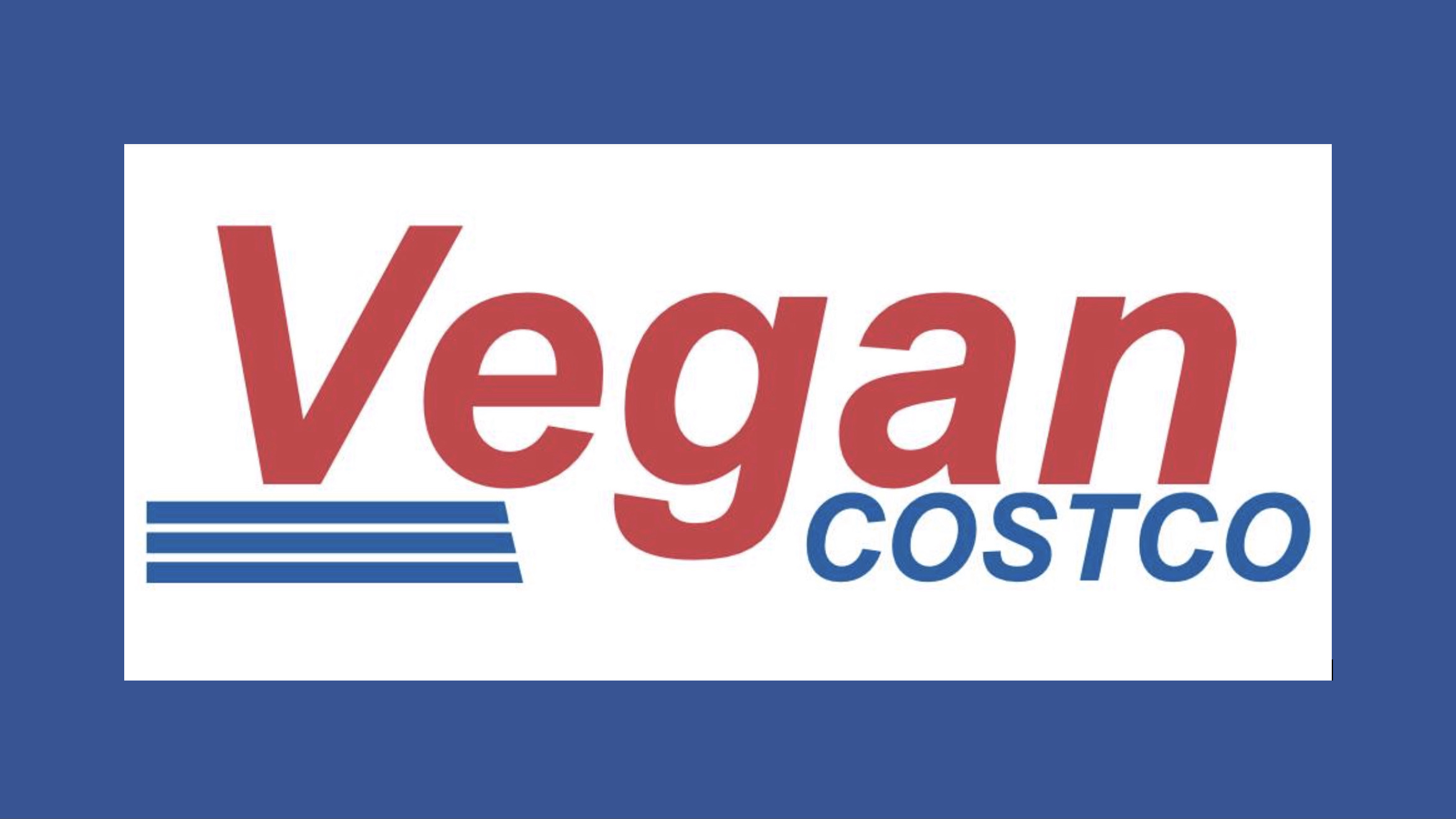
New Vegan CostCo Facebook Group

Vegan Aldi (USA) Facebook Group

Vegan Walmart Facebook Group

Vegan Cheeze: Hits & Misses Facebook Group
Elimination Diets and Food Journals

Consider keeping a food diary and/or try an elimination diet to help you figure out which foods are giving you trouble.
Elimination diets
- Elimination diets should be done under the supervision of a dietitian or doctor.
- With an elimination diet, you temporarily stop eating certain foods that may trigger your reactions.
- Elimination diets usually last 2-4 weeks.
- During this period, your doctor will monitor your symptoms.
- If you eliminated the right foods, your symptoms should improve by the end of this period.
- If your symptoms improve, they might encourage you to stop eating dairy products altogether.
- There are lots of resources on elimination diets. This Healthline article is a good starting point.
Food Journals
Writing all the foods you eat and the reactions you experience in a journal can help you figure out which foods trigger your reactions. It will also help you determine how long reactions may be delayed and the severity of the reactions.
- Record the date and time for everything you eat or drink.
- Include all foods, and the approximate amount of them, that you eat.
- Don’t exclude anything, even if you know it doesn’t have alpha-gal in it. AGS can trigger additional allergies, and for some people, high histamine foods can trigger reactions as well.
- Be specific, use brand names, so you can check the ingredients again in case you missed something.
- Record the date, time, duration, type, and severity of all your reactions.
- Record any medications you take to treat reactions and how you responded
* Thanks to Jennifer Burton of Alpha-gal Encouragers for her contributions to this section.
Work with a Dietitian

Owing to numerous ‘hidden’ alpha-gal exposures beyond red meats and to the need for individualized guidance, we recommend co-management with dietitian colleagues
Why see a dietitian?
Because of the ubiquitous presence of alpha-gal in foods, people with alpha-gal syndrome often benefit from working with a dietitian. This is especially true for people who:
- Experience dramatic weight loss or at risk of not getting adequate nutrition
- Have other conditions in addition to AGS that limit their diet, such as:
- Multiple food allergies
- Diabetes
- Celiac disease
- Have a history of eating disorders
- Develop nutritional deficiencies
- Cannot determine the sources of their reactions
- Struggle to find foods they can eat.
Registered dietitians vs. nutritionists
Registered dietitians are certified by the Academy of Nutrition and Dietetics.
- A nutritionist is not always certified.
How a dietitian can help
A dietitian can help you:
- Identify foods you can eat.
- Develop meal plans.
- Ensure that you are getting the right amount of calories.
- Avoid deficiencies
- Determine whether you need supplements.
Finding a dietitian
- Ask your allergist or primary care physician to refer you to a dietitian or nutritionist.
- If possible, find one with an understanding of AGS.
- AGS expert Dr. Scott Commins recommends Julie Kennedy.
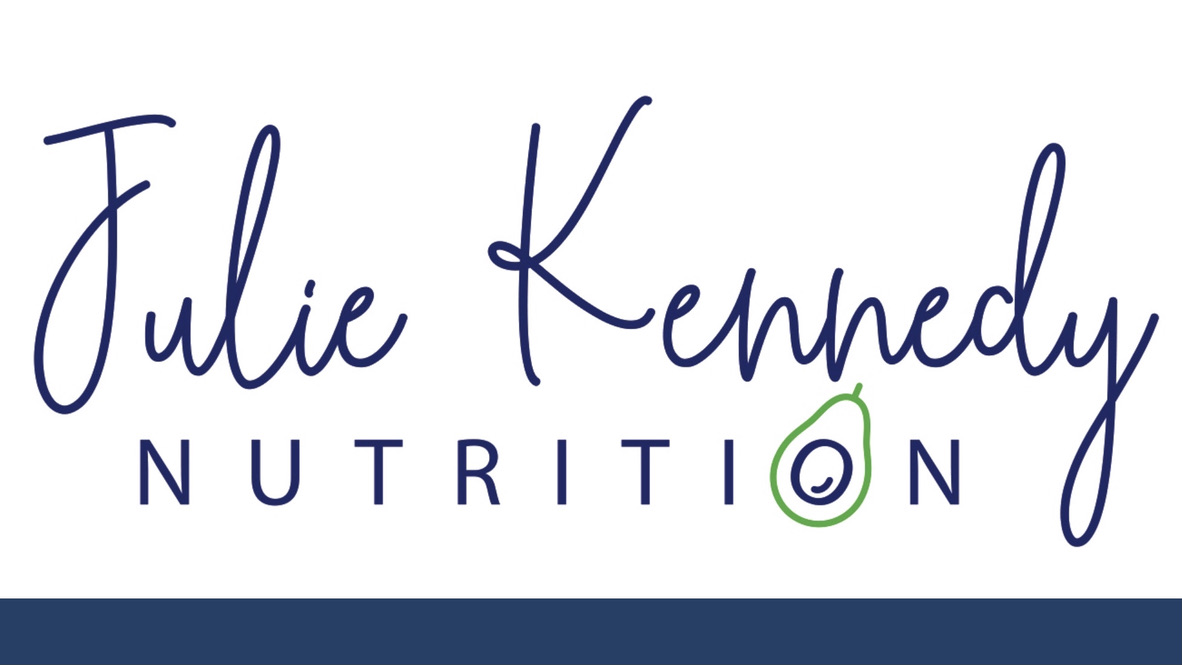
Julie Kennedy Nutrition
A registered dietitian with experience advising people with alpha-gal syndrome.
Watch for Deficiencies
Keep an eye out for deficiencies
- Vitamin B12 deficiency is especially common in the alpha-gal community.
- Low iron or ferritin levels have also been reported.
Trust Your Body
Trust your body!
If you react to something, trust your body, stop eating it! There are many ways that alpha-gal can be introduced into a product that seems like it should be alpha-gal free, including:
- Cross-contamination from shared lines
- Undisclosed processing agents
- Waste from pest species like mice and rats
Moreover, every year, the alpha-gal community uncovers more unexpected sources of alpha-gal exposure.
Be aware of other issues
Sometimes your reactions aren’t caused by alpha-gal, but that doesn’t mean you should ignore them. It is not uncommon for people with AGS to develop:
- Tick-borne disease
- Additional food allergies
- Mast cell disorders
- Histamine intolerance
Don’t let people bully you
Don’t second guess yourself, and more importantly, don’t let other people pressure you into eating foods that you know don’t agree with you.
- Believe in yourself
- Find allies
- Be assertive
- Learn to say no!
- Distance yourself from bullies. You deserve better!
Reintroduce Foods
First steps
As you get your reactions under control, start adding foods back into your diet.
- Proceed slowly and carefully, adding food items one by one to figure out which are problematic for you.
- Check ALL ingredients in processed foods to ensure they do not contain alpha-gal before reintroducing them to your diet. These approaches may help:
- Contact manufacturers. This is the most fail-safe approach.
- Use the Mammalian Byproducts Database
- Ask about products in a support group
- Take note of any reactions they elicit.
Next steps
With time, many people’s sensitivity to alpha-gal declines. As a result, you may find that you can reintroduce some foods you previously reacted to, such as dairy, back into your diet.
- Seek a physician’s advice before reintroducing foods back into your diet.
- While reintroducing foods, remember these essential points:
- Alpha-gal reactions are highly variable. You could not react to an exposure for months at a time and then have a severe reaction.
- Reactions are delayed by up to 10 hours or more. This makes oral challenges in a physician’s office difficult.
- New tick bites can make you more sensitive to alpha-gal.
- Around half the time, people bitten by ticks don’t realize it.
- There is so such thing as recovery from alpha-gal syndrome, only remission.
- For these reasons, it is the opinion of the creator of this website that the vast majority of people in remission from AGS should stop short of reintroducing the riskiest foods, including mammalian meat and organs. Not all experts agree.
Learn How to Eat Out Safely
Once you are ready to venture out to restaurants again, learn how to dine out safely.
Guides to dining out with AGS
- Request the Two Alpha Gals Guide to Dining Out Guide here.
- See the AGI Dining Out: A Guide for People with AGS (coming soon) for more information.
Restaurant cards
- Restaurant cards: coming soon.

Happy Cow app
Find nearby vegan restaurants
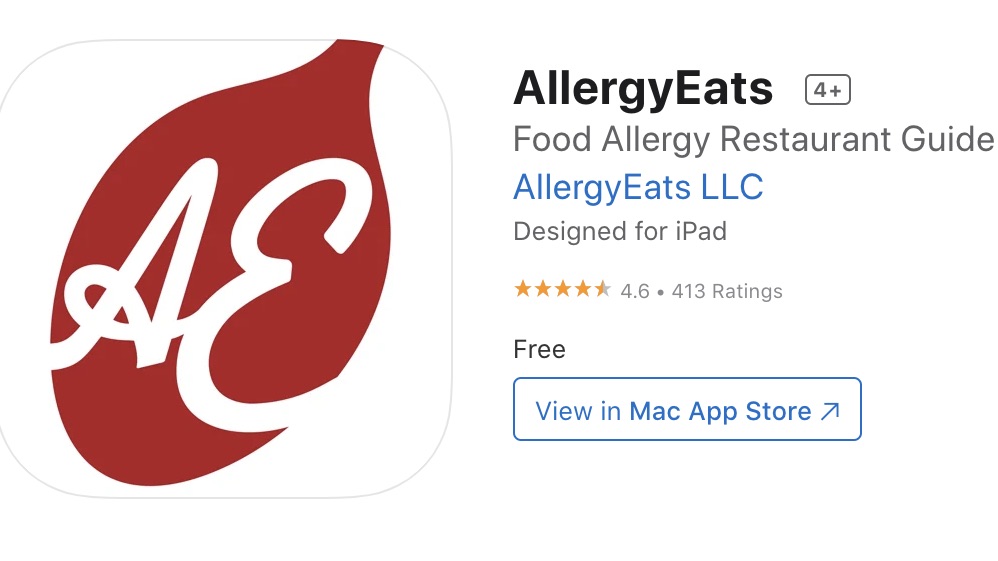
AllergyEats
Food allergy restaurant guide
More Resources
Resources from step #1
Click on the “+” icon to open
Mammalian meat, organs, tissues, and blood
Most of the foods on this list should be avoided by everyone with alpha-gal syndrome (6,57). You may have had mild reactions after eating red meat, but your next reaction could be more serious, as explained above. Up to 60% of people with AGS have anaphylactic reactions (24,78,87,88,89) and 30-40% of people have cardiac and respiratory symptoms (90). Don’t play Russian roulette!
- Mammalian meats (1,6,57), such as beef, pork, lamb, bison, venison, goat, horse, rabbit, squirrel, kangaroo, antelope, buffalo, camel, guinea pig, bats, whales, etc.
- If you aren’t sure which animals are mammals, there is a guide here.
- The internal organs of mammals, like liver (21), lung, heart, intestines (tripe or offal), and kidneys (6,57).
- Mammalian gut sausage casings (6,57).
- Mammalian fat, like lard, tallow, and suet*
- Mammalian fat is often in cooked foods, such as sauces, pastries, pie crusts, tortillas, tortilla chips, refried beans, baked beans, vegetable dishes, mashed potatoes, and desserts.
- Some baking mixes (like Jiffy Corn Muffin Mix) contain lard.
- Beef fat is often added to fry oil to enhance flavor (6,57).
- Bones and bone marrow
- Testicles (Rocky Mountain or prairie oysters)
- Mammalian skin (like pork rinds and ponmo)
- Mammalian collagen (e.g. beef collagen sausage casings) (6,57)*
- Meat broth, bouillon, and stock (6,57)**
- Gravy (6,57)
- Mammalian blood, found in soups, black pudding, blood sausage, blodplättar, and other foods
- Meat broths, bouillon, stocks, and gravy (6,57)**
- Meat extracts, like Bonox and Bovril***
- All other mammalian body parts, organs, tissues, cells, and fluids, such as tendons, brain, lungs, heart, nerves, skin, mammalian bile (Papait seasoning), and the products that contain them.
*”Some subjects can tolerate without allergic reactions but should be used with caution” (6)
**”Stocks and bouillon cubes: these are often derived from mammalian sources and additional research is need to understand the risks from these and other hidden exposures.” (57)
***We aren’t aware of any published information about the risks of these products, but caution seems advisable.
Some experts may advocate less restrictive guidelines for some asterisked foods for their least less reactive patients (57)(6), but as many people with AGS report that some of their worst reactions occurred after eating them (especially lard), we recommend that most people avoid them completely, unless their physician advises otherwise.
See Food: A Guide for People with Alpha-gal Syndrome for more information.
Flounder roe (eggs)
Japanese studies found that people with AGS can have severe reactions after eating the roe (eggs) of some flounder species (26, 104). There is no evidence of alpha-gal in most other fish eggs, including the non-flounder fish roes most commonly eaten in the U.S., but proceed with caution when trying new and exotic types of fish roe.
Airborne exposures
There are no published data on the percentage of people with alpha-gal syndrome (AGS) who react after exposure to airborne alpha-gal, but the informal estimates of experts range from 10-30% (113, 114). People with AGS who react to airborne alpha-gal report that reactions often start within minutes of exposure, progress quickly, and can be severe.
- Suspended fat droplets in smoke or fumes from cooking meat, especially from grills, barbeques, and sometimes frying meat are by far the most commonly reported airborne trigger of alpha-gal reactions (57).
- Until you know whether you react to airborne alpha-gal, exercise caution around possible sources of exposure, especially barbecues and other types of cooking that generate aerosolized droplets of mammalian fat.
- If you experience dizziness, breathing difficulty or other symptoms, remove yourself immediately from the source of exposure!
- Some people with AGS report that fume reactions are the most dangerous reactions that they experience, leading rapidly to anaphylaxis, airway issues, and/or unconsciousness.
For more more information about reactions to airborne alpha-gal, including reported symptoms other sources of airborne alpha-gal that may trigger reactions, see Reactions to Airborne Alpha-gal: A Guide for People with Alpha-gal Syndrome.
Resources from step #2
Click on the “+” icon to open
Rennet
Rennet is a complex set of enzymes that is sometimes used in foods, especially cheese. Most rennet is extracted from the stomachs of ruminant mammals, although sometimes vegetable and microbial rennets are used. It’s not uncommon for people who tolerate some other types of dairy to react to cheese made with rennet.
Rennet may also be listed on labels as:
- Enzymes
- Traditional rennet
- Rennin (also called chymosin)
Products that contain rennet include:
- Parmesan
- Some other cheeses, especially hard cheeses
- Packaged macaroni and cheese
- Desserts, like Junket
Tips:
- Look for cheeses labeled “vegetarian.”
- Find cheeses that don’t contain rennet on the Vegetatio list of vegetarian cheeses.
- Read Bad News: These 11 Cheeses Aren’t Always Vegetarian for a list of some, but not all, cheeses that do contain rennet.
- See The Definitive Guide to Vegetarian Cheese for more info about both cheeses with and without rennet.
- Is Cheese Vegetarian? is a quick guide to finding information about rennet on cheese labels.
Lipase is another mammalian byproduct used in cheesemaking. There is insufficient data to determine whether it contains alpha-gal or whether people with AGS react to it, but it is derived from porcine pancreas, which is known have very high alpha-gal content.
Milk and Dairy Products
10-33% (57,85) of people with AGS react to milk and dairy products.
- As alpha-gal seems to be concentrated in animal fat, high-fat dairy products, like ice cream and butter are the most likely to trigger reactions (57).
- Some people can tolerate cheese that is not made with rennet, especially low-fat cheeses.
- Cream contains more alpha-gal than milk, but many people who react to higher-fat dairy products tolerate both.
- See the Wikipedia list of dairy products to see which other foods are dairy products.
Some people who don’t tolerate dairy products also react to dairy byproducts in foods, drugs, and other products:
- Whey protein powder, a concentrated form of milk protein, can trigger reactions even in some people who tolerate other dairy products. Look for it in protein powders, protein bars, and supplements (29). Anecdotal reports suggest that whey is one of the more problematic dairy byproducts for people with AGS.
- Casein is another common dairy byproduct. It’s not clear whether casein is glycosylated with alpha-gal or not, but caution is recommended for dairy-sensitive members of the alpha-gal community.
- There are several lists of dairy products and dairy byproducts. GoDairyFree’s Dairy Ingredient List and Milk Allergy Avoidance List are among the most helpful.
- For a wallet-sized card with some of the more common dairy byproducts see Kelly Mom’s Hidden Dairy “Cheat Sheet.”
- Dairy byproducts in drugs and vaccines include (but are not limited to) lactose, casamino acids, casein, and lactalbumin. Lactose alone is used in more than 20% of prescription drugs and about 6% in over-the-counter medicines. However, most drugs that contain dairy byproducts do not bother the majority of people with AGS.
Shopping tips:
- Check labels. Milk is a Big 8 allergen and must be declared on ingredient lists of many, but not all foods and drinks. Foods and drinks that do NOT have to be labeled include: meat, fish, egg products, fresh fruits and vegetables, and alcoholic drinks.
- Medications, supplements, personal care or household products also do not need to have dairy ingredients declared on their labels.
- Learn the difference between “non-dairy” vs “dairy-free.”
- Beware of dairy byproducts in non-dairy products, including whey and casein.
- If you react to dairy byproducts, stick to “dairy-free” products but remember to check them for mammalian byproducts that are not from milk, like vitamin D3 (from lanolin) and carrageenan.
GoDairyFree is a great website with much more information about dairy allergies and helpful reviews of dairy-free products.
Gelatin
Fewer than 10% of people with AGS react to gelatin in foods (57), but some have severe reactions (27,28). Gelatin can be consumed through the mouth (for example when we eat gelatin in foods or swallow medications in gelatin capsules) or administered some other way, as with vaccines and medications delivered through an IV. In this section we ONLY deal with gelatin in foods. People who tolerate gelatin in foods, supplements, and some medications, may experience severe and sudden-onset symptoms, including anaphylaxis, when medical products containing gelatin are injected or administered through an IV (6,28,52,57). There have also been cases of gelatin in vaginal capsules triggering anaphylaxis (37).
- Gelatin is made from collagen derived from the bones, skin, and other parts of animals.
- Most gelatin is from cows or pigs and contains alpha-gal. Some products are made with fish gelatin, which is safe for people with AGS, but these are rare.
- Fewer of us react to gelatin in foods than to dairy, but for some of us, our reactions to gelatin are worse than our dairy reactions.
- Gelatin can also be listed on labels as hydrolyzed animal protein, collagen hydrolysate, denatured collagen, and gelatina. Other names for gelatin, including trade names, are listed here and here.
- Gelatin is used as an ingredient in many foods as a stablizer, thickener, texturizer and to improve the mouth-feel of reduced-fat foods.
- Gelatin is also used as a processing aid, for example to clarify beverages, like wine, beer and juice. Processing aids do not need to be listed as an ingredient.
- Foods that can contain gelatin include, but are not limited to:
- Candy including Starburst, Altoids, gummy worms and other gummy candies, peeps, some candy corn, and jelly beans
- Gummy vitamins and supplements, including fish oil in gelatin capsules
- Jello gelatin
- Marshmallows
- Dairy products, including yogurt, ice cream, whipped cream, sour cream, cream cheese, cottage cheese, cheese spreads, and semi-fat cheese spreads
- Margarine
- Desserts, including popsicles, instant dessert powders, cakes or cake fillings, instant puddings, cheesecake
- Jellies and jams
- Icing and frosting
- Syrups
- Snacks, including Rice Krispy Treats, Poptarts, snack bars, and fruit-flavored snacks
- Pastries and other baked goods
- Some cereals, like Lucky Charms, Kellogg’s Frosted Mini-Wheats and other frosted cereals, cereals with marshmallows in them, and many others.
- Peanuts, such as Planters Dry Roasted Peanuts, which are coated with gelatin to help the salt stick
- Fruit salads
- Food foams (espuma)
- Aspic
- Dips
- Soups and stock, including jellied tomato consommé
- Sauces
- Glazes
- Meats and meat products, including:
- Bouillon
- Sausage coatings
- Ground meat
- Sausages
- Frozen turkey products
- Lunch meats
- Chicken rolls
- Canned meat
- Turkey
- Instant gravy, instant sauces and soups
- Beverages, including:
- Animal glue, for example, as an adhesive on stickers used on fruit
- As a coating on fresh vegetables and fruit
- Gelatin is used as a processing aid for:
- Clarification of beverages such as wine, beer, vegetable and fruit juice (especially apple juice), and possibly vinegar
- Microencapsulation of colors, flavors, oils, vitamins
It’s important to remember that it’s not just food that can contain gelatin.
- Many medications and supplements contain gelatin, especially those in capsules. For most medications, there are alternatives that do not contain mammalian-derived ingredients like gelatin. In cases where there aren’t alternatives, you may need to way the risks of exposure to gelatin–which vary from individual to individual and product to product–against the benefits of taking the a medication. Seek your doctor’s advice about what to do if your supplements or medications contain gelatin.
- Many personal care products contain gelatin.
If you react to gelatin, remember to always check labels to see if foods, medications, and personal care products contain it before you buy them. Fish gelatin is not from mammals and many people with AGS use it as a substitute for mammalian gelatin.
See Gelatin: A Guide for People with Alpha-gal Syndrome for more information.
Carrageenan
At least 1-2% of people with AGS report reacting to carrageenan (57)(6). Many of us think the actual number is much higher and that the small number reported in the literature is due to patients failing to connect their reactions to carrageenan and reporting them as dairy-related. For example, multiple reports of reactions to the Dairy Queen blizzard have been attributed to the blizzard’s dairy content, but blizzards also contain carrageenan.
- Carrageenans are a family of linear sulfated polysaccharides that are extracted from red edible seaweeds. They are widely used in the food industry, for their gelling, thickening, and stabilizing properties
- Although carrageenans are not derived from mammals, they contain the alpha-gal epitope (54).
- There isn’t much in the literature about carrageenan reactions in people with AGS, but many of us react to carrageenans, and our reactions can be severe.
- Carrageenans are widely used in the food industry as:
- Ingredients, for their gelling, thickening and stabilizing properties
- Processing agents used in the clarification of beer and juice
- Coating materials sprayed on cut organic fruit
- Water retention agents applied to fish prior to processing
- Functional agents in the production of cheese
- Clarifiers and heat stabilizers in wine
- Other foods that can contain carrageenan include, but are not limited to:
- Many dairy products, including ice cream; milk shakes, like Dairy Queen blizzards; yogurt; flavored, evaporated, and condensed milks; whipped topping; cheeses; and sour cream (76)
- Many dairy-free substitutes (57)
- Desserts, including flans, custards, cream puddings, mousse, sorbet, gelato, and gel desserts (76,77)
- Drink mixes (powdered lemonade, fruit punch) (77)
- Juices, ready to spread icings, jams, jellies, salad dressing, and candies (76,77)
- Salad dressing, mayonaisse, and relishes (77)
- Poultry products:raw poultry is often injected with carrageenan and it is frequently added to deli meats and other processed poultry products to enhance texture (77)
- Drinks, such as beer and juice clarified by carrageenan (77)
- Seafood, such as fish treated with carrageenan to improve moisture retention (77)
- Tofu (77)
- Infant formula (77)
Carrageenan is also found in some personal care products, like toothpaste, and medical products.
As with gelatin, it is possible that carrageenan in some medical products may have a greater potential to cause serious reactions than carrageenan in foods, but there is no published or unpublished data on this, as far as we are aware.
See Carrageenan: A Guide for People with Alpha-gal Syndrome for more information.
Cross-contamination (cross-contact)
An unknown percentage of people with AGS react to food contaminated by mammalian meat or other mammalian products, including some people who tolerate dairy and other moderate risk foods. A contributing factor to the risk posed by cross-contamination (also called cross-contact) is the heat stability of alpha-gal which, unlike protein allergens, is not denatured at normal cooking temperatures. Another issue is that fat seems to be the primary antigenic form of alpha-gal. Fat is less likely to be removed from grills, pots, pans, and other surfaces during cleaning than proteins. Also, droplets of fat from cooking meat can contaminate nearby food.
Some of the more common sources of alpha-gal contamination include:
- Grills, pots, pans, spatulas, and other cooking utensils.
- Cooking utensils used to for mammalian meats and other products need to be thoroughly cleaned after use.
- Grills are a common problem, and many people with AGS buy a separate grill for cooking alpha-gal-free foods.
- In restaurants, avoid grilled foods unless they are cooked on a separate grill from the any used for cooking mammalian meat.
- Droplets of fat from splatter or fumes from cooking meat
- Contaminated cutting and preparation surfaces
- Contaminated knifes and other kitchen cutlery, when not cleaned between uses
- Sponges used to clean items contaminated with meat fat.
- Wooden, plastic and heavily-scratched cooking utensils can trap fat even when cleaned, as can cast-iron pans, if they aren’t scrubbed and re-seasoned.
- Improper storage of food in refrigerators: store mammalian meat on the bottom shelf or in a separate refrigerator drawer.
- Ovens and microwaves contaminated with mammalian grease
Additional sources of contamination markets, restaurants, and manufacturing facilities:
- Fry oil: sometimes animal fat is added to fry oil for flavor, but even when it’s not, oil can be contaminated if mammalian meats or products were fried in it previously.
- Grinders and sausage making equipment: ground poultry and poultry sausages are frequently contaminated with other meats when contaminated grinders and other equipment are used.
- Deli meat slicers: sliced turkey and cheese (for those who tolerate it) can be contaminated when sliced on with contaminated slicers.
- Butchers and meat departments: cross-contamination can occur during handling
- Gloves, if not changed after handling mammalian products
- Shared processing lines/facilities.
See Cross-Contamination: A Guide for People with Alpha-gal Syndrome for more information.
References
1. Commins SP, Satinover SM, Hosen J, Mozena J, Borish L, Lewis BD, Woodfolk JA, Platts-Mills TA. Delayed anaphylaxis, angioedema, or urticaria after consumption of red meat in patients with IgE antibodies specific for galactose-α-1, 3-galactose. Journal of Allergy and Clinical Immunology. 2009 Feb 1;123(2):426-33.
2. Commins S, Lucas S, Hosen J, Satinover SM, Borish L, Platts-Mills TA. Anaphylaxis and IgE antibodies to galactose-alpha-1, 3-galactose (alphaGal): insight from the identification of novel IgE ab to carbohydrates on mammalian proteins. Journal of Allergy and Clinical Immunology. 2008 Feb 1;121(2):S25.
3. Commins SP, James HR, Kelly LA, Pochan SL, Workman LJ, Perzanowski MS, Kocan KM, Fahy JV, Nganga LW, Ronmark E, Cooper PJ. The relevance of tick bites to the production of IgE antibodies to the mammalian oligosaccharide galactose-α-1, 3-galactose. Journal of Allergy and Clinical Immunology. 2011 May 1;127(5):1286-93.
4. Soh JY, Huang CH, Lee BW. Carbohydrates as food allergens. Asia Pacific Allergy. 2015 Jan 1;5(1):17-24.
5. Levin M, Apostolovic D, Biedermann T, Commins SP, Iweala OI, Platts-Mills TA, Savi E, van Hage M, Wilson JM. Galactose α-1, 3-galactose phenotypes: Lessons from various patient populations. Annals of Allergy, Asthma & Immunology. 2019 Jun 1;122(6):598-602.
6. Platts-Mills TA, Li RC, Keshavarz B, Smith AR, Wilson JM. Diagnosis and management of patients with the α-Gal syndrome. The Journal of Allergy and Clinical Immunology: In Practice. 2020 Jan 1;8(1):15-23.
7. Commins SP. Invited commentary: alpha-gal allergy: tip of the iceberg to a pivotal immune response. Current allergy and asthma reports. 2016 Sep 1;16(9):61.
8. Crispell G, Commins SP, Archer-Hartman SA, Choudhary S, Dharmarajan G, Azadi P, Karim S. Discovery of alpha-gal-containing antigens in North American tick species believed to induce red meat allergy. Frontiers in immunology. 2019 May 17;10:1056.
9. Monzón JD, Atkinson EG, Henn BM, Benach JL. Population and evolutionary genomics of Amblyomma americanum, an expanding arthropod disease vector. Genome biology and evolution. 2016 May 1;8(5):1351-60.
10. Raghavan RK, Peterson AT, Cobos ME, Ganta R, Foley D. Current and future distribution of the lone star tick, Amblyomma americanum (L.)(Acari: Ixodidae) in North America. PLoS One. 2019 Jan 2;14(1):e0209082.
11. Wilson JM, Platts-Mills TA. Red meat allergy in children and adults. Current opinion in allergy and clinical immunology. 2019 Jun 1;19(3):229-35.
12. Commins, SP. (2018). Retrieved from: More people developing red meat allergy from tick bites. CBS News
13. Flaherty MG, Threats M, Kaplan SJ. Patients’ Health Information Practices and Perceptions of Provider Knowledge in the Case of the Newly Discovered Alpha-gal Food Allergy. Journal of Patient Experience. 2020 Feb;7(1):132-9.
14. Flaherty MG, Kaplan SJ, Jerath MR. Diagnosis of life-threatening alpha-gal food allergy appears to be patient driven. Journal of primary care & community health. 2017 Oct;8(4):345-8.
15. Cabezas-Cruz A, Hodžić A, Román-Carrasco P, Mateos-Hernández L, Duscher GG, Sinha DK, Hemmer W, Swoboda I, Estrada-Peña A, De La Fuente J. Environmental and molecular drivers of the α-Gal syndrome. Frontiers in Immunology. 2019 May 31;10:1210.
16. Commins SP, Platts-Mills TA. Tick bites and red meat allergy. Current opinion in allergy and clinical immunology. 2013 Aug;13(4):354.
17. Stoltz LP, Cristiano LM, Dowling AP, Wilson JM, Platts-Mills TA, Traister RS. Could chiggers be contributing to the prevalence of galactose-alpha-1, 3-galactose sensitization and mammalian meat allergy?. The journal of allergy and clinical immunology. In practice. 2019 Feb;7(2):664.
18. Arkestål K, Sibanda E, Thors C, Troye-Blomberg M, Mduluza T, Valenta R, Grönlund H, van Hage M. Impaired allergy diagnostics among parasite-infected patients caused by IgE antibodies to the carbohydrate epitope galactose-α1, 3-galactose. Journal of Allergy and Clinical Immunology. 2011 Apr 1;127(4):1024-8.
19. Chinuki Y, Ishiwata K, Yamaji K, Takahashi H, Morita E. Haemaphysalis longicornis tick bites are a possible cause of red meat allergy in Japan. Allergy. 2016 Mar;71(3):421-5.
20. Hashizume H, Fujiyama T, Umayahara T, Kageyama R, Walls AF, Satoh T. Repeated Amblyomma testudinarium tick bites are associated with increased galactose-α-1, 3-galactose carbohydrate IgE antibody levels: a retrospective cohort study in a single institution. Journal of the American Academy of Dermatology. 2018 Jun 1;78(6):1135-41.
21. Bianchi, John (2019). Personal communication
22. Morisset M, Richard C, Astier C, Jacquenet S, Croizier A, Beaudouin E, Cordebar V, Morel‐Codreanu F, Petit N, Moneret‐Vautrin DA, Kanny G. Anaphylaxis to pork kidney is related to IgE antibodies specific for galactose‐alpha‐1, 3‐galactose. Allergy. 2012 May;67(5):699-704.
23. Fischer J, Hebsaker J, Caponetto P, Platts-Mills TA, Biedermann T. Galactose-alpha-1, 3-galactose sensitization is a prerequisite for pork-kidney allergy and cofactor-related mammalian meat anaphylaxis. Journal of allergy and clinical immunology. 2014 Sep 1;134(3):755-9.
24. Fischer J, Yazdi AS, Biedermann T. Clinical spectrum of α-Gal syndrome: from immediate-type to delayed immediate-type reactions to mammalian innards and meat. Allergo journal international. 2016 Mar 1;25(2):55-62.
25. McPherson TB, Liang H, Record RD, Badylak SF. Galα (1, 3) Gal epitope in porcine small intestinal submucosa. Tissue engineering. 2000 Jun 1;6(3):233-9.
26. Fujiwara M, Araki T. Immediate anaphylaxis due to beef intestine following tick bites. Allergology International. 2019;68(1):127-9.
27. Caponetto P, Fischer J, Biedermann T. Gelatin-containing sweets can elicit anaphylaxis in a patient with sensitization to galactose-α-1, 3-galactose. The Journal of Allergy and Clinical Immunology: In Practice. 2013 May 1;1(3):302-3.
28. Mullins RJ, James H, Platts-Mills TA, Commins S. Relationship between red meat allergy and sensitization to gelatin and galactose-α-1, 3-galactose. Journal of Allergy and Clinical Immunology. 2012 May 1;129(5):1334-42.
29. Kaman K, Robertson D. ALPHA-GAL ALLERGY; MORE THAN MEAT?. Annals of Allergy, Asthma & Immunology. 2018 Nov 1;121(5):S115.
30. Chung CH, Mirakhur B, Chan E, Le QT, Berlin J, Morse M, Murphy BA, Satinover SM, Hosen J, Mauro D, Slebos RJ. Cetuximab-induced anaphylaxis and IgE specific for galactose-α-1, 3-galactose. New England journal of medicine. 2008 Mar 13;358(11):1109-17.
31. Berg EA, Platts-Mills TA, Commins SP. Drug allergens and food—the cetuximab and galactose-α-1, 3-galactose story. Annals of Allergy, Asthma & Immunology. 2014 Feb 1;112(2):97-101.
32. Dunkman WJ, Rycek W, Manning MW. What does a red meat allergy have to do with anesthesia? Perioperative management of alpha-gal syndrome. Anesthesia & Analgesia. 2019 Nov 1;129(5):1242-8.
33. Pfützner W, Brockow K. Perioperative drug reactions–practical recommendations for allergy testing and patient management. Allergo journal international. 2018 Jun 1;27(4):126-9.
34. Dewachter P, Kopac P, Laguna JJ, Mertes PM, Sabato V, Volcheck GW, Cooke PJ. Anaesthetic management of patients with pre-existing allergic conditions: a narrative review. British journal of anaesthesia. 2019 Jul 1;123(1):e65-81.
35. Popescu FD, Cristea OM, IONICĂ FE, Vieru M. DRUG ALLERGIES DUE TO IgE SENSITIZATION TO α-GAL. magnesium. 2018;2017:47-8.
36. Swiontek K, Morisset M, Codreanu-Morel F, Fischer J, Mehlich J, Darsow U, Petitpain N, Biedermann T, Ollert M, Eberlein B, Hilger C. Drugs of porcine origin—A risk for patients with α-gal syndrome?. The Journal of Allergy and Clinical Immunology: In Practice. 2019 May 1;7(5):1687-90.
37. Vidal C, Mendez-Brea P, Lopez-Freire S, Gonzalez-Vidal T. Vaginal Capsules: An Unsuspected Probable Source of Exposure to α-Gal. Journal of investigational allergology & clinical immunology. 2016;26(6):388.
38. Muglia C, Kar I, Gong M, Hermes-DeSantis ER, Monteleone C. Anaphylaxis to medications containing meat byproducts in an alpha-gal sensitized individual. The journal of allergy and clinical immunology. In practice. 2015;3(5):796.
39. Akella K, Patel H, Wai J, Roppelt H, Capone D. Alpha Gal-Induced Anaphylaxis to Herpes Zoster Vaccination. Chest. 2017 Oct 1;152(4):A6.
40. Bakhtiar MF, Leong KW, Kwok FY, Hui MT, Tang MM, Joseph CT, Bathumana‐Appan PP, Nagum AR, ZHM Y, Murad S. P66: ALLERGIC REACTION TO BOVINE GELATIN COLLOID: THE ROLE OF IMMUNOGLOBULIN E TOWARDS GALACTOSE‐ALPHA‐1, 3‐GALACTOSE: IMPLICATIONS BEYOND RED MEAT ALLERGIES. Internal Medicine Journal. 2017 Sep;47:24-.
41. Bradfisch F, Pietsch M, Forchhammer S, Strobl S, Stege HM, Pietsch R, Carstens S, Schäkel K, Yazdi A, Saloga J. Case series of anaphylactic reactions after rabies vaccinations with gelatin sensitization. Allergo Journal International. 2019 Jun 1;28(4):103-6.
42. Stone CA, Commins SP, Choudhary S, Vethody C, Heavrin JL, Wingerter J, Hemler JA, Babe K, Phillips EJ, Norton AE. Anaphylaxis after vaccination in a pediatric patient: further implicating alpha-gal allergy. The Journal of Allergy and Clinical Immunology: In Practice. 2019 Jan 1;7(1):322-4.
43. Stone CA, Hemler JA, Commins SP, Schuyler AJ, Phillips EJ, Peebles RS, Fahrenholz JM. Anaphylaxis after zoster vaccine: Implicating alpha-gal allergy as a possible mechanism. Journal of Allergy and Clinical Immunology. 2017 May 1;139(5):1710-3.
44. Pattanaik D, Lieberman P, Lieberman J, Pongdee T, Keene AT. The changing face of anaphylaxis in adults and adolescents. Annals of Allergy, Asthma & Immunology. 2018 Nov 1;121(5):594-7.
45. Ankersmit HJ, Copic D, Simader E. When meat allergy meets cardiac surgery: A driver for humanized bioprosthesis. The Journal of thoracic and cardiovascular surgery. 2017 Oct 1;154(4):1326-7.
46. Hawkins RB, Frischtak HL, Kron IL, Ghanta RK. Premature bioprosthetic aortic valve degeneration associated with allergy to galactose‐alpha‐1, 3‐galactose. Journal of cardiac surgery. 2016 Jul;31(7):446-8.
47. Kleiman AM, Littlewood KE, Groves DS. Delayed anaphylaxis to mammalian meat following tick exposure and its impact on anesthetic management for cardiac surgery: a case report. A&A Practice. 2017 Apr 1;8(7):175-7.
48. Mozzicato SM, Tripathi A, Posthumus JB, Platts-Mills TA, Commins SP. Porcine or bovine valve replacement in three patients with IgE antibodies to the mammalian oligosaccharide galactose-alpha-1, 3-galactose. The journal of allergy and clinical immunology. In practice. 2014 Sep;2(5):637.
49. Mangold A, Szerafin T, Hoetzenecker K, Hacker S, Lichtenauer M, Niederpold T, Nickl S, Dworschak M, Blumer R, Auer J, Ankersmit HJ. Alpha-Gal specific IgG immune response after implantation of bioprostheses. The Thoracic and cardiovascular surgeon. 2009 Jun;57(04):191-5.
50. Fischer J, Eberlein B, Hilger C, Eyer F, Eyerich S, Ollert M, Biedermann T. Alpha‐gal is a possible target of IgE‐mediated reactivity to antivenom. Allergy. 2017 May;72(5):764-71.
51. Rizer J, Brill K, Charlton N, King J. Acute hypersensitivity reaction to Crotalidae polyvalent immune Fab (CroFab) as initial presentation of galactose-α-1, 3-galactose (α-gal) allergy. Clinical Toxicology. 2017 Aug 9;55(7):668-9.
52. Farooque S, Kenny M, Marshall SD. Anaphylaxis to intravenous gelatin‐based solutions: a case series examining clinical features and severity. Anaesthesia. 2019 Feb;74(2):174-9.
53. Lied GA, Lund KB, Storaas T. Intraoperative anaphylaxis to gelatin-based hemostatic agents: a case report. Journal of asthma and allergy. 2019;12:163.
54. Tobacman JK. The common food additive carrageenan and the alpha-gal epitope. Journal of Allergy and Clinical Immunology. 2015 Dec 1;136(6):1708-9.
55. Tarlo SM, Dolovich J, Listgarten C. Anaphylaxis to carrageenan: A pseudo–latex allergy. Journal of allergy and clinical immunology. 1995 May 1;95(5):933-6.
56. Steinke JW, Platts-Mills TAE, Schuyler A, Commins SP. Reply to “The common food additive carrageenan and the alpha-gal epitope”. Journal of Allergy and Clinical Immunology. 2015 Oct 28;136(6):1709-10
57. Commins SP. Diagnosis & management of alpha-gal syndrome: lessons from 2,500 patients. Expert Review of Clinical Immunology. 2020 Jul 9:1-1.
58. Galili, U., & Avila, J. L. (Eds.). (2012). α–Gal and Anti–Gal: α1, 3–Galactosyltransferase, α–Gal Epitopes, and the Natural Anti–Gal Antibody Subcellular Biochemistry (Vol. 32). Springer Science & Business Media.
59. Fischer J, Lupberger E, Hebsaker J, Blumenstock G, Aichinger E, Yazdi AS, Reick D, Oehme R, Biedermann T. Prevalence of type I sensitization to alpha‐gal in forest service employees and hunters. Allergy. 2017 Oct;72(10):1540-7.
60. SAT0456 SERO-REACTIVITY TO GALACTOSE-ALPHA-1,3-GALACTOSE AND CLINICAL PRESENTATIONS OF PATIENTS SEEN IN A RHEUMATOLOGY OUTPATIENT PRACTICE. Annals of the Rheumatic Diseases 2019 Jun 15;78:1317-8.
61. Bianchi J, Walters A, Fitch ZW, Turek JW. Alpha-gal syndrome: Implications for cardiovascular disease. Global Cardiology Science and Practice. 2020 Feb 9;2019(3).
62. Carter MC, Ruiz‐Esteves KN, Workman L, Lieberman P, Platts‐Mills TA, Metcalfe DD. Identification of alpha‐gal sensitivity in patients with a diagnosis of idiopathic anaphylaxis. Allergy. 2018 May;73(5):1131-4.
63. Binder AM, Commins SP, Altrich ML, et al. Diagnostic testing for galactose-alpha-1,3-galactose, United States, 2010 to 2018. Ann Allergy Asthma Immunol. 2021;126(4):411-416.e1.
64. I-TICK Surveillance. Retrieved from: https://twitter.com/ITickUIUC/status/1282799807996854278
65. Wickner PG, Commins SP. The first 4 Central American cases of delayed meat allergy with galactose-alpha-1, 3-galactose positivity clustered among field biologists in Panama. Journal of Allergy and Clinical Immunology. 2014 Feb 1;133(2):AB212.
66. Ohshita N, Ichimaru Y, Gamoh S, Tsuji K, Kishimoto N, Tsutsumi YM, Momota Y. Management of infusion reactions associated with cetuximab treatment: A case report. Molecular and Clinical Oncology. 2017 Jun 1;6(6):853-5.
67. Stein D, Schuyler A, Commins S, Behm B, Chitnavis M. P-002 YI First Dose IgE-Mediated Allergy to Infliximab Due to Galactose-α-1, 3-Galactose Allergy. Inflammatory Bowel Diseases. 2016 Mar 1;22:S9-10.
68. Van Tine BA, Govindarajan R, Attia S, Somaiah N, Barker SS, Shahir A, Barrett E, Lee P, Wacheck V, Ramage SC, Tap WD. Incidence and management of olaratumab infusion-related reactions. Journal of oncology practice. 2019 Nov;15(11):e925-33.
69. Venturini M, Lobera T, Sebastián A, Portillo A, Oteo JA. IgE to α-Gal in Foresters and Forest Workers From La Rioja, North of Spain. Journal of investigational allergology & clinical immunology. 2018;28(2):106.
70. Apostolovic D, Tran TA, Hamsten C, Starkhammar M, Cirkovic Velickovic T, van Hage M. Immunoproteomics of processed beef proteins reveal novel galactose‐α‐1, 3‐galactose‐containing allergens. Allergy. 2014 Oct;69(10):1308-15.
71. Khora SS, Navya P. Bioactive Polysaccharides from Marine Macroalgae. Encyclopedia of Marine Biotechnology. 2020 Aug 4.
72. Gowda DC, Glushka J, Halbeek HV, Thotakura RN, Bredehorst R, Vogel CW. N-linked oligosaccharides of cobra venom factor contain novel α (1-3) galactosylated Lex structures. Glycobiology. 2001 Mar 1;11(3):195-208.
73. Hodžić A, Mateos-Hernández L, Fréalle E, Román-Carrasco P, Alberdi P, Pichavant M, Risco-Castillo V, Le Roux D, Vicogne J, Hemmer W, Auer H. Infection with Toxocara canis Inhibits the Production of IgE Antibodies to α-Gal in Humans: Towards a Conceptual Framework of the Hygiene Hypothesis?. Vaccines. 2020 Jun;8(2):167.
74. Taguchi T, Kitajima K, Muto Y, Inoue S, Khoo KH, Morris HR, Dell A, Wallace RA, Selman K, Inoue Y. A precise structural analysis of a fertilization-associated carbohydrate-rich glycopeptide isolated from the fertilized eggs of euryhaline killi fish (Fundulus heteroclitus). Novel penta-antennary N-glycan chains with a bisecting N-acetylglucosaminyl residue. Glycobiology. 1995 Sep 1;5(6):611-24.
75. Shao Y, Yu Y, Pei CG, Qu Y, Gao GP, Yang JL, Zhou Q, Yang L, Liu QP. The expression and distribution of α-Gal gene in various species ocular surface tissue. International journal of ophthalmology. 2012;5(5):543.
76. Chauhan PS, Saxena A. Bacterial carrageenases: an overview of production and biotechnological applications. 3 Biotech. 2016 Dec 1;6(2):146.
77. USDA Carrageenan Handling/Processing
78. van Nunen S. Galactose-alpha-1, 3-galactose, mammalian meat and anaphylaxis: a world-wide phenomenon?. Current Treatment Options in Allergy. 2014 Sep 1;1(3):262-77.
79. Wilson JM, Nguyen AT, Schuyler AJ, Commins SP, Taylor AM, Platts-Mills TA, McNamara CA. IgE to the mammalian oligosaccharide galactose-α-1, 3-galactose is associated with increased atheroma volume and plaques with unstable characteristics—brief report. Arteriosclerosis, thrombosis, and vascular biology. 2018 Jul;38(7):1665-9.
80. Wilson JM, McNamara CA, Platts-Mills TA. IgE, α-Gal and atherosclerosis. Aging (Albany NY). 2019 Apr 15;11(7):1900.
81. Tina Merritt, MD, personal communication.
82. Hodgeman N, Horn CL, Paredes A. An Unusual Mimicker of Irritable Bowel Disease: 1855. American Journal of Gastroenterology. 2019 Oct 1;114(2019 ACG Annual Meeting Abstracts):S1039.
83. Bensinger A, Green P. Mammalian Meat Allergy Masquerading as IBS-D: 1846. American Journal of Gastroenterology. 2019 Oct 1;114(2019 ACG Annual Meeting Abstracts):S1036-7.
84. Mabelane T, Basera W, Botha M, Thomas HF, Ramjith J, Levin ME. Predictive values of alpha‐gal IgE levels and alpha‐gal IgE: Total IgE ratio and oral food challenge‐proven meat allergy in a population with a high prevalence of reported red meat allergy. Pediatric Allergy and Immunology. 2018 Dec;29(8):841-9.
85. Armstrong P, Binder A, Amelio C, Kersh G, Biggerstaff B, Beard C, Petersen L, Commins S. Descriptive Epidemiology of Patients Diagnosed with Alpha-gal Allergy—2010–2019. Journal of Allergy and Clinical Immunology. 2020 Feb 1;145(2):AB145.
86. Pointreau Y, Commins SP, Calais G, Watier H, Platts-Mills TA. Fatal infusion reactions to cetuximab: role of immunoglobulin E–mediated anaphylaxis. Journal of clinical oncology: official journal of the American Society of Clinical Oncology. 2012 Jan 20;30(3):334.
87. van Nunen S. Tick-induced allergies: mammalian meat allergy, tick anaphylaxis and their significance. Asia Pacific Allergy. 2015 Jan 1;5(1):3-16.
88. van Nunen S, O’Connor K, Fernando S, Clarke L, Boyle R. THE ASSOCIATION BETWEEN IXODES HOLOCYCLUS TICK BITE REACTIONS AND RED MEAT ALLERGY: P17. Internal Medicine Journal. 2007 Nov 1;37.
89. Van Nunen SA, O’Connor KS, Clarke LR, Boyle RX, Fernando SL. An association between tick bite reactions and red meat allergy in humans. The Medical journal of Australia. 2009 May 4;190(9):510-1.
90. Meat Allergy Tirggered by a Tick Bite with Eri McGintee retrieved from: https://youtu.be/hj96Vvr1WhQ
91. Fischer J, Huynh HN, Hebsaker J, Forchhammer S, Yazdi AS. Prevalence and Impact of Type I Sensitization to Alpha-Gal in Patients Consulting an Allergy Unit. International Archives of Allergy and Immunology. 2020;181(2):119-27.
92. Platts-Mills TA, Commins SP, Biedermann T, van Hage M, Levin M, Beck LA, Diuk-Wasser M, Jappe U, Apostolovic D, Minnicozzi M, Plaut M. On the cause and consequences of IgE to galactose-α-1, 3-galactose: a Report from the National Institute of Allergy and Infectious Disease Workshop on Understanding IgE-Mediated Mammalian Meat Allergy. Journal of Allergy and Clinical Immunology. 2020 Feb 10.
93. Takahashi H, Chinuki Y, Tanaka A, Morita E. Laminin γ‐1 and collagen α‐1 (VI) chain are galactose‐α‐1, 3‐galactose–bound allergens in beef. Allergy. 2014 Feb;69(2):199-207.
94. Hilger C, Fischer J, Swiontek K, Hentges F, Lehners C, Eberlein B, Morisset M, Biedermann T, Ollert M. Two galactose‐α‐1, 3‐galactose carrying peptidases from pork kidney mediate anaphylactogenic responses in delayed meat allergy. Allergy. 2016 May;71(5):711-9.
95. Iweala OI, Choudhary SK, Addison CT, Batty CJ, Kapita CM, Amelio C, Schuyler AJ, Deng S, Bachelder EM, Ainslie KM, Savage PB. Glycolipid-mediated basophil activation in alpha-gal allergy. Journal of Allergy and Clinical Immunology. 2020 Feb 20.
96. Iweala O, Brennan PJ, Commins SP. Serum IgE specific for alpha-Gal sugar moiety can bind glycolipid. Journal of Allergy and Clinical Immunology. 2017 Feb 1;139(2):AB88.
97. Iweala OI, Choudhary SK, Addison CT, Batty CJ, Kapita CM, Amelio C, Schuyler AJ, Deng S, Bachelder EM, Ainslie KM, Savage PB. Glycolipid-mediated basophil activation in alpha-gal allergy. Journal of Allergy and Clinical Immunology. 2020 Feb 20.
98. Villalta D, Pantarotto L, Da Re M, Conte M, Sjolander S, Borres MP, Martelli P. High prevalence of sIgE to Galactose‐α‐1, 3‐galactose in rural pre‐Alps area: a cross‐sectional study. Clinical & Experimental Allergy. 2016 Feb;46(2):377-80.
99. Galili U, Clark MR, Shohet SB, Buehler J, Macher BA. Evolutionary relationship between the natural anti-Gal antibody and the Gal alpha 1—-3Gal epitope in primates. Proceedings of the National Academy of Sciences. 1987 Mar 1;84(5):1369-73.
100. Wilson JM, Platts-Mills TA. The oligosaccharide galactose-α-1, 3-galactose and the α-Gal syndrome: insights from an epitope that is causal in immunoglobulin E-mediated immediate and delayed anaphylaxis. Eur Med J. 2018;3:89-98.
101. Zurbano-Azqueta L, Antón-Casas E, Duque-Gómez S, Jiménez-Gómez I, Fernández-Pellón L, López-Gutiérrez J. Alpha-gal syndrome. Allergy to red meat and gelatin. Revista Clínica Española (English Edition). 2021 Oct 14.
102. Christian RA, Stabile KJ, Gupta AK, Leckey Jr BD, Cardona DM, Nowinski RJ, Kelly JD, Toth AP. Histologic Analysis of Porcine Dermal Graft Augmentation in Treatment of Rotator Cuff Tears. The American journal of sports medicine. 2021 Oct 15:03635465211049434.
103. Kuravi KV, Sorrells LT, Nellis JR, et al. Allergic response to medical products in patients with alpha-gal syndrome. J Thorac Cardiovasc Surg. Published online April 9, 2021. doi:10.1016/j.jtcvs.2021.03.100
104. Chinuki Y, Morita E, Takahashi H. IgE antibodies to galactose-a-1,3-galactose, an epitope of red meat allergen, cross-react with a novel flounder roe allergen. J Investig Allergol Clin Immunol. Published online October 15, 2021:0.
105. Shao Y, Yu Y, Pei C-G, et al. The expression and distribution of α-Gal gene in various species ocular surface tissue. Int J Ophthalmol. 2012;5(5):543.
106. Murangi T, Prakash P, Moreira BP, et al. Ascaris lumbricoides and ticks associated with sensitisation to Galactose α1,3-galactose and elicitation of the alpha-gal syndrome. J Allergy Clin Immunol. Published online July 29, 2021. doi:10.1016/j.jaci.2021.07.018
107. Mateos-Hernández L, Risco-Castillo V, Torres-Maravilla E, et al. Gut Microbiota Abrogates Anti-α-Gal IgA Response in Lungs and Protects against Experimental Aspergillus Infection in Poultry. Vaccines (Basel). 2020;8(2). doi:10.3390/vaccines8020285
108. Aspergillus oryzae, Wikipedia
109. Murugan AVM, Oliveira T, Alagesan K, et al. Evolutionary Glycomics: A Comprehensive Study of Vertebrate Host Serum/Plasma Glycome Using Orthogonal Glycomics Techniques. The FASEB Journal. 2021;35(S1). doi:10.1096/fasebj.2021.35.S1.04538
110. Gowda DC, Glushka J, van Halbeek H, Thotakura RN, Bredehorst R, Vogel C-W. N-linked oligosaccharides of cobra venom factor contain novel α (1-3) galactosylated Lex structures. Glycobiology. 2001;11(3):195-208.
111. Ramasamy R. Mosquito vector proteins homologous to α1-3 galactosyl transferases of tick vectors in the context of protective immunity against malaria and hypersensitivity to vector bites. Parasit Vectors. 2021;14(1):303.
112. Fukunaga T, Tanaka N, Furumoto T, et al. Substrate specificities of α1,2- and α1,3-galactosyltransferases and characterization of Gmh1p and Otg1p in Schizosaccharomyces pombe. Glycobiology. Published online April 28, 2021. doi:10.1093/glycob/cwab028
113. van Nunen, S. Mammalian Meat Allergy after Tick Bite and Tick Anaphylaxis in Australia. International Tick Symposium (2018). 2018. Retrieved from https://www.youtube.com/watch?v=C4fzZO9UlzE&list=LLcoL9fUr713IGKBwo-CELVw&index=21 @1:09:00
114. Scott Commins, MD, PhD, personal communication
115. Perusko M, Apostolovic D, Kiewiet MB, Grundström J, Hamsten C, Starkhammar M, Cirkovic Velickovic T, van Hage M. Bovine γ‐globulin, lactoferrin, and lactoperoxidase are relevant bovine milk allergens in patients with α‐Gal syndrome. Allergy. 2021 May 3.
116. Croglio MP, Commins SP, McGill SK. Isolated Gastrointestinal Alpha-gal Meat Allergy Is a Cause for Gastrointestinal Distress Without Anaphylaxis. Gastroenterology. 2021 May 1;160(6):2178-80.
117. Richards NE, Richards Jr RD. Alpha-Gal Allergy as a Cause of Intestinal Symptoms in a Gastroenterology Community Practice. Southern Medical Journal. 2021 Mar 1;114(3):169-73.
